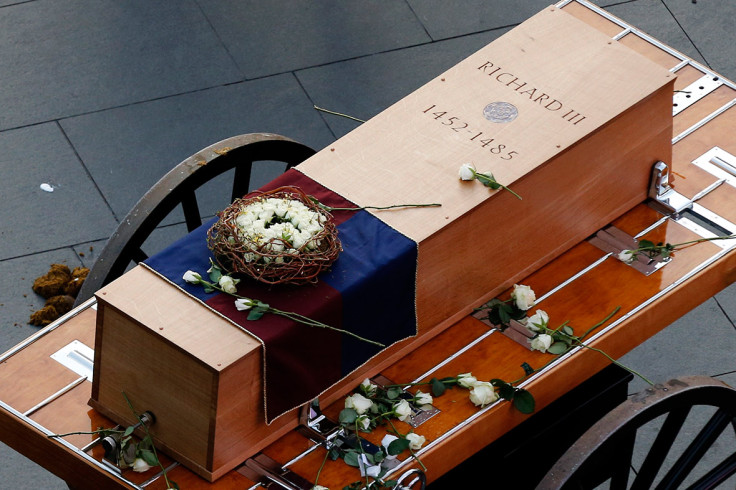Richard III: Blue eyes, roundworm, hunchback and everything science has revealed about king

Excitement is mounting ahead of the burial of Richard III, with thousands visiting Leicester Cathedral to view the former king's coffin before his remains are reinterred.
The reburial ceremony will be held at Leicester Cathedral on Thursday 26 March, led by the Archbishop of Canterbury Justin Welby. Since the skeleton of Richard III was found under a car park in Leicester in 2012, the exhumation of the bones have revealed several insights into the life of the Plantagenet monarch.
We know that Richard was the king of England from 1483 until his death in 1485 in the Battle of Bosworth Field. We also know he was the last king of the House of York and the last of the Plantagenet dynasty, and that his defeat at Bosworth was the last decisive battle of the Wars of the Roses – bringing an end to the Middle Ages in England. But what do we know about the personal life of Richard III?
Blond hair and blue eyes
Researchers at the University of Leicester collected DNA from the living relatives of Richard III to analyse genetic markers, including the mitochondrial genomes (inherited through the maternal line) and the Y-chromosomal markers (from the paternal line). The research gave an insight into the likelihood of the king's appearance, suggesting he almost certainly had blond hair and blue eyes – at least in his childhood.
Genetic specialist Turi King, from Leicester University, told CNN in December 2014: "There are genes that we know are involved in coding for hair and eye colour. The genetic evidence shows he had a 96% probability of having blue eyes, and a 77% probability of having blond hair, though this can darken with age."
Hunchback
Richard was English history's most famous hunchback, but according to experts, the king's disfigurement was likely to have been slight because a "well-balanced" sideways curvature in the spine would have meant his head and neck were straight – not tilted to one side.
He did suffer from idiopathic adolescent-onset scoliosis, but his resulting disability would not have been obvious when he was alive. According to Leicester University researchers, a good tailor and a skilful armourer may have been able to disguise the curve in his spine.

Height
Researchers have established that Richard would have been about 5ft 8in (1.7m) tall without his scoliosis, about average for a medieval man, although his condition meant he would have appeared several inches shorter.
It is not likely that Richard appeared with the pronounced hunchback he was popularly portrayed with by Tudor propagandists, especially Shakespeare.
Rich diet
Richard had a taste for the finer things in life, dining on wildfowl such as heron, swan and egret. Scientists at the British Geological Survey measured the levels of isotopes in the king's remains, including oxygen, nitrogen, strontium and carbon, which revealed what he ate and drank.
In the last few years of his life, the researchers spotted a change in his diet to include richer foods – which coincided with his becoming king. The menu from the king's coronation banquet included peacock, swan and various types of fish.
Roundworm
Scientists from the University of Cambridge and the University of Leicester found evidence that the king was suffering from a roundworm infection when he died. Soil samples from the pelvis and skull of the skeleton revealed roundworm eggs in the areas where the intestines would have been, revealing that Richard had a case of Ascaris lumbricoides.
It is likely that he ingested the eggs via contaminated food, water or soil. Once the eggs have hatched and the worms matured, they are capable of growing up to a foot long.
© Copyright IBTimes 2025. All rights reserved.






















